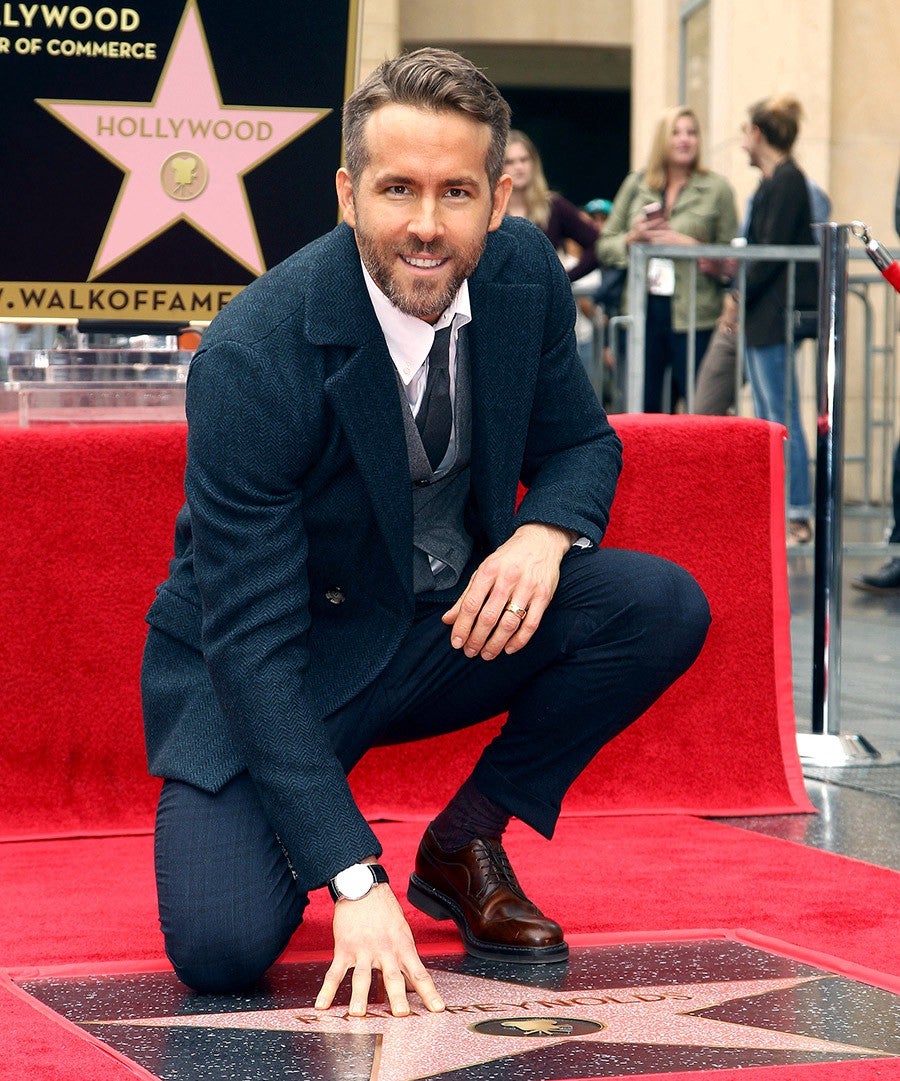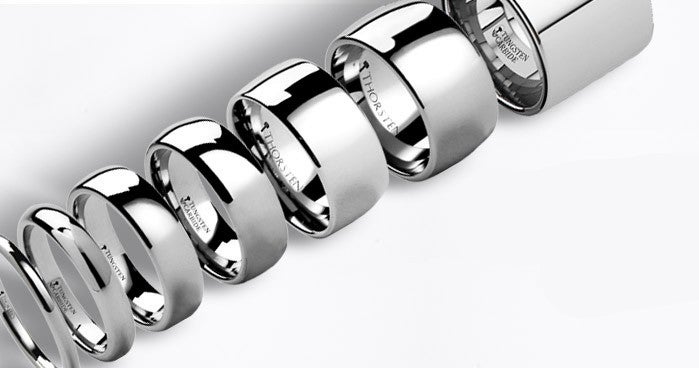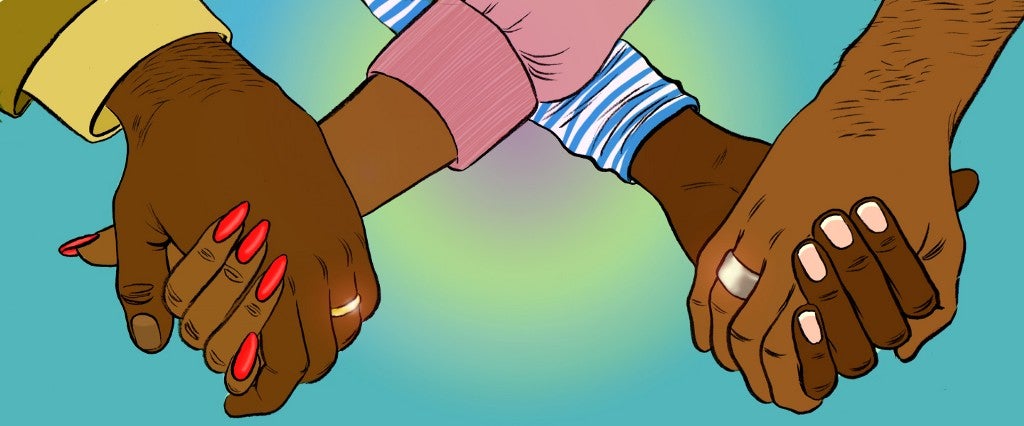While public figures like Donald Trump and Jay-Z have gained attention for eschewing wedding rings, matrimonial bands for men are actually more popular than ever before. Men’s wedding bands first caught on in America with GIs in World War II; thanks to increased economic prosperity, a push for gender equality and some savvy marketing, the tradition hit the mainstream soon after. By 1943, nearly 80 percent of new grooms in America wore wedding rings. Since then, they’ve become just as commonplace to weddings as bad bridesmaid dresses and drunken speeches. And just as the rise of online shopping and social media have ushered in an era of unique and over-the-top engagement rings, wedding bands for men have evolved from a perfunctory piece of titanium to a fully formed fashion statement.
One trend that’s become common throughout the country is thicker bands, which stars like Ryan Reynolds and Adam Levine have been spotted rocking. While 4 to 5 millimeters remains the average in Europe, Barry Verragio—whose company Verragio Jewelers provides wedding and engagement rings to boutiques and retail chains across the country—says that the average wedding band in the U.S. now comes in around 6–7 millimeters (about three stacked nickels), with 8 millimeters being the second most popular size. In fact, his company sells more 9- and 10-millimeter rings than those in the 4- to 5-millimeter range.

The same is true for industry giant Signet, the corporate umbrella for companies including Zales and Kay Jewelers. A representative tells MEL that its most popular rings fall in the 4- to 8-millimeter range, with 6 millimeters being the top seller. But at stores like Larson Jewelers in Long Beach, California, men can buy rings up to a whopping 12 millimeters. “A majority of men that have a finger size under 9 [the most popular men’s ring size] prefer a 6 mm wide ring,” the store’s website explains in its shopping guide for online buyers. “This is because they do not want the ring to look too big in comparison to their hand.”
But the increasing band-width isn’t about balance—rings have become the canvas of choice for men trying to make a statement. “Men don’t really wear a lot of jewelry so they don’t want just a skimpy metal band,” Verragio says. “They do quite a bit of customization.”
Rachel Pffefer, a jewelry designer based in Washington, D.C. who custom-makes wedding bands, among other items, has noticed similar trends. “They’re more particular since it’s the only piece of jewelry they own,” says Pfeffer, who has been in the business eight years and is the daughter of a jeweler.
And size isn’t the only thing about men’s rings that has changed over the past decade. With the increasing popularity of “man-gagement” rings, there’s also been a move toward blinging it up. A growing number of men’s bands now have stones burnished into the ring itself. Jared, Zales and Kay Jewelers all feature bands with diamonds in their bestsellers lists, something that would have been virtually unheard of two decades ago.
And while tungsten and titanium sales rose after the recession thanks to their comparative cheapness, precious metals are also making a resurgence. Both Verragio Jewelers and Signet have seen increased sales in gold bands, particularly white and rose gold. Men have also taken to mixing metals, just another symbol of the shift toward the “one of a kind” aesthetic many brides seek in their engagement rings. From camouflage to amber inlay, there’s something out there to give even the least fashion-obsessed that “not your dad’s ring” feel.

Pfeffer, who only works with precious metals, has noticed clients more interested in hammered bands with rougher edges than traditionally round and smooth rings. Producers like Verragio and Kay might still err on the side of convention, but with money-conscious millennials opting out of traditional diamond engagement rings, the importance of providing fashionable alternatives to a growing men’s market is an important part of doing business. Shares of heavy hitters such as Signet Jewelers, Tiffany & Co. and Blue Nile have all fallen nearly 20 percent this year, and diamond sales are projected to grow five perfect less than last year.
“We like them to be edgy but at the same time appeal to everyone,” says Verragio.
Of course, there’s one more reason men’s wedding rings are staying in vogue: partners who see them as a crucial symbol of commitment. If it’s tempting to interpret a man’s refusal to wear a ring as a lack of commitment, it’s hard to misinterpret a finger shackled with a thick hunk of gold.
“She wants him to buy jewelry that has value,” says Verragio. “It represents unity and marriage; it should have value. All guys should have one.”
